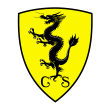
 |
|
|
Turbocharger
Our Modular Turbo™ System comprises different types and configur- ations:
- pressure
- velocity
- blowdown
- parallel
- pressure (2×same size)
- sequential
- pressure (1×small and 1×larger)
- staged (2×same size pressure)
- compound (1×pressure and 1×velocity blowdown)
- parallel
- pressure (4×same size or 2×2×same size)
- sequential
- pressure (2×(1×small and 1×larger))
- staged (2×2×same size pressure)
- compound (2×(1×pressure and 1×velocity blowdown))
Supercharger
Our Modular Supercharger™ System comprises different types and configurations:
Compound Forced Induction Architecture™
Our Modular Forced Induction™ System compounds turbocharger and supercharger without or with energy recovery systems.
Anti-Lag System
While Variable Geometry Turbochargers (VGTs), sequential twin- and quad-turbos with a small and a larger turbine, as well as our differ- ent Compound Forced Induction Architectures™ are already solut- ions that partly overcome the turbo lag, there are also other techni- ques to work against this effect.
One very nice example for an Anti-Lag System (ALS) is to use the exhaust system and the turbo like a jet engine by letting the super- charger bypass the combustion chambers and blow charge air dir- ectly into the exhaust manifold, and running the engine in a fuel-rich mode. Then the charge air and the fuel-rich exhaust mix are ignited by the hot manifold in a continuous combustion. As a result of this the momentum and the rotational speed of the exhaust turbine can be controlled in an extremely advantageous way, so that the turbo lag is eliminated and the torque at low revolutions of an engine fitted with this system even surpasses engines with larger displacements.